Living in today’s digital landscape, the onus is on you to be different from the competition.
One of the important tools in your marketing armory that can help you do this is remarketing—a practice that enables you to reconnect with potential customers who have previously engaged with your brand.
You will be able to enhance your advertising effectiveness manifold by reminding such users of their interests and gently nudging them toward conversionA completed action by a user, such as making a purchase or signing up..
In this article, we’re going to go over some effective remarketing strategies in Google Ads that will help you increase your ROI and drive more sales.
Understanding Remarketing in Google Ads
Remarketing is a kind of online advertising that enables you to show ads to users who previously visited your website or used your mobile app.
It aims for customers who may have visited your website but have not completed a purchase or an intended conversion.
The application of remarketing will ensure that your brand is kept in the sight of such users, who may then be reminded to return and complete their transaction.
This interest may be shown by simply browsing your website, adding products to a shopping cart, or other similar ways.
You are then able to build ads for these users based upon their actions by tracking these interactions.

Visual representation of the remarketing process in digital marketing.
How Remarketing Works
Remarketing works by placing a small piece of code on your website, often referred to as a ‘remarketing tagA piece of code placed on a website to track visitors for remarketing purposes..’ This tag will gather data about the visitors to your website and add them to a remarketing list.
Then, when they go on to other sites displaying Google Ads, they may just see your ad.
This method ensures that your brand stays at the forefront of their minds.

An image illustrating the positive impact of remarketing in digital advertising.
Benefits of Remarketing
- Increased Brand Awareness: By repeatedly exposing users to your brand, you enhance recognition and familiarity.
- Higher Conversion Rates: Remarketing can significantly increase the likelihood of conversions by targeting users who have already expressed interest.
- Cost-Effectiveness: Compared to traditional advertising methods, remarketing can offer a higher return on investment as you are targeting a warm audience.
- Customizable Ads: You can tailor your ads based on user behavior, creating highly relevant messaging that speaks to their specific interests.
As you can see, understanding remarketing strategies in Google Ads is vital for creating effective campaigns that convert.
The difference it creates in the success of advertising can be huge, given that now one can reach out to users who have already engaged with your brand.
Now, let’s get into the types of remarketing strategies that you can implement based on maximum return expectations.
Remarketing helps re-engage potential customers by targeting those who have shown interest but haven’t completed a purchase.

An image illustrating the different types of remarketing strategies.
Types of Remarketing Strategies
There are several types of remarketing strategies that one can apply using Google Ads to reach an audience more effectively.
Each of these serves a different purpose and can be applied to fit different business objectives.
Let’s dive into the main types of remarketing strategies that can assist in maximizing advertising efforts.

An illustration of standard remarketing strategies in digital marketing.
Standard Remarketing
Standard remarketing is the most basic form of remarketing.
It allows you to show ads to users who have visited your site previously while they browse other websites in the Google Display NetworkA collection of websites, including Google properties, where ads can be displayed..
This process keeps your brand top of mind for them.

An illustration of dynamic remarketing strategies in digital advertising.
Dynamic Remarketing
If the user perused a certain set of products, dynamic remarketing shows them in ads.
This personalized touch really pays off in conversion rates, as the ads are highly relevant to the user’s interests.

Illustration of Remarketing Lists for Search Ads in digital marketing.
Remarketing Lists for Search Ads (RLSA)
Remarketing Lists for Search Ads (RLSA) lets you customize your search ads for people who have previously interacted with your website.
When users who have visited your site make a related search, your ads can appear with tailored messages.
This approach allows you to bid differently for these users and further optimizes your search campaigns in ways that positively impact your results.

An illustration of video remarketing strategies in digital advertising.
Video Remarketing
If you use video content, then video remarketing is a great approach.
This allows showing ads to users who have seen your videos previously or interacted with your YouTube channel.
Video ads can serve as a compelling reminder of your brand and products, prompting users to return to your website.

An illustration of social media remarketing strategies in digital marketing.
Social Media Remarketing
While not directly part of Google Ads, social media remarketing is worth mentioning.
Platforms like Facebook and Instagram offer remarketing options that allow you to show ads to users who have interacted with your content.
This will extend your reach and strengthen your messages across platforms.
Through the implementation of these different types of remarketing strategies, interested users can effectively be re-engaged.
Whether standard or dynamic remarketing strategies are in place, your tailored approach will afford greater interactions and conversions.
Now, let’s dive deep into how you should go about setting up your remarketing campaigns.
Different remarketing types, like standard, dynamic, and video remarketing, cater to varied user behaviors and engagement levels.
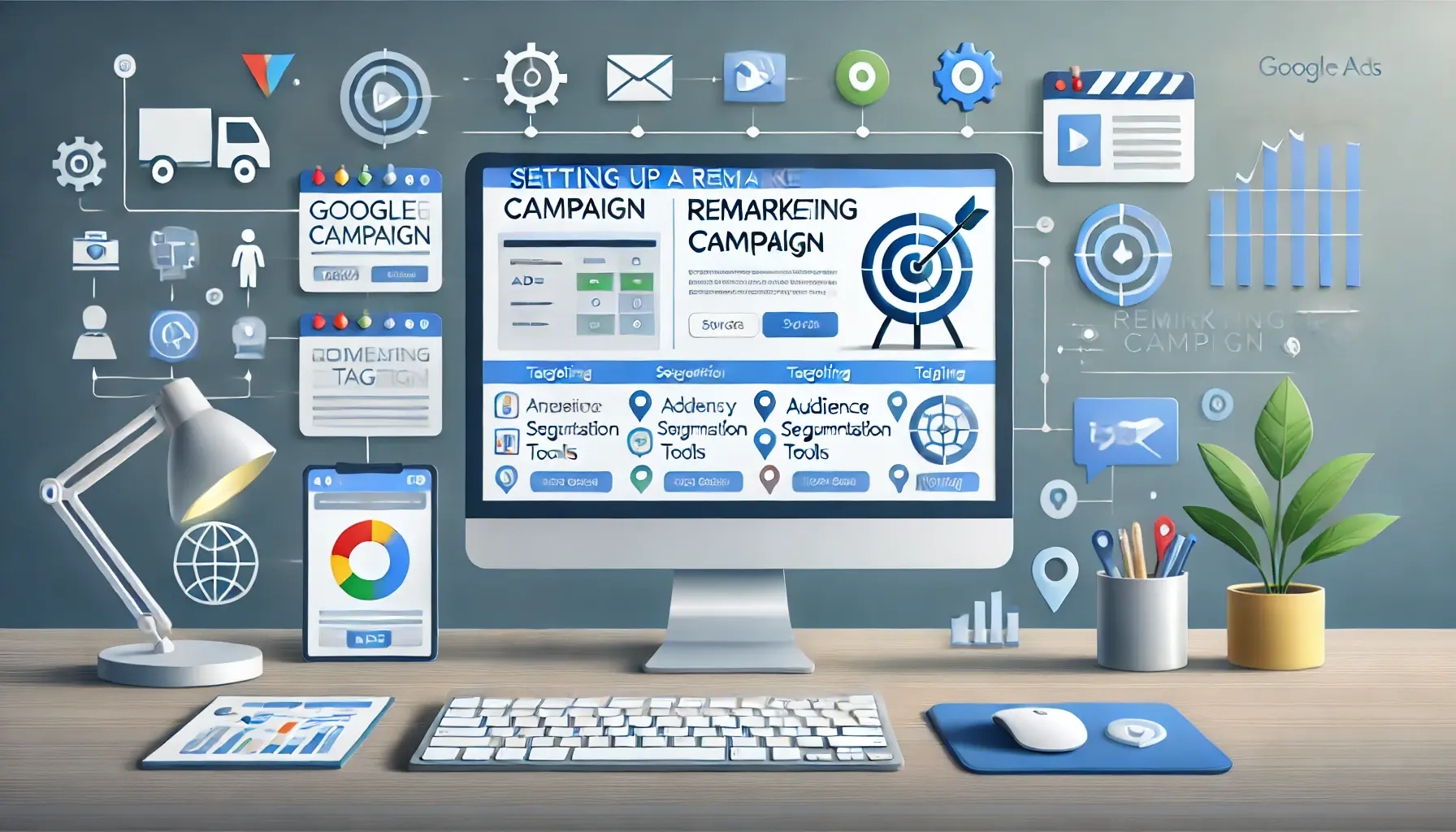
Illustration of setting up a remarketing campaign in Google Ads.
Setting Up a Remarketing Campaign
Got a little serious here.
Setting up efficient remarketing campaigns in Google Ads will seriously increase your chances of reconnecting with users who have already shown interest in your brand.
Next are the critical steps to build and optimize your remarketing campaigns.

Illustration of creating a remarketing list in digital marketing.
1. Create Your Remarketing List
The first step in setting up a remarketing campaign is creating a remarketing list.
You can do this through Google Ads or Google Analytics.
Here’s how to make a list:
- Log into Google Ads.
- Open the ‘Audience Manager.’
- Click ‘Remarketing Lists’ and the ‘+’ icon.
- Choose the type of list you want to create: website visitors, app users, etc.
When creating your list, you need to think about the user segment in relation to their interactions.
For example, you might want to target users who added items to their shopping cart but did not complete the purchase.
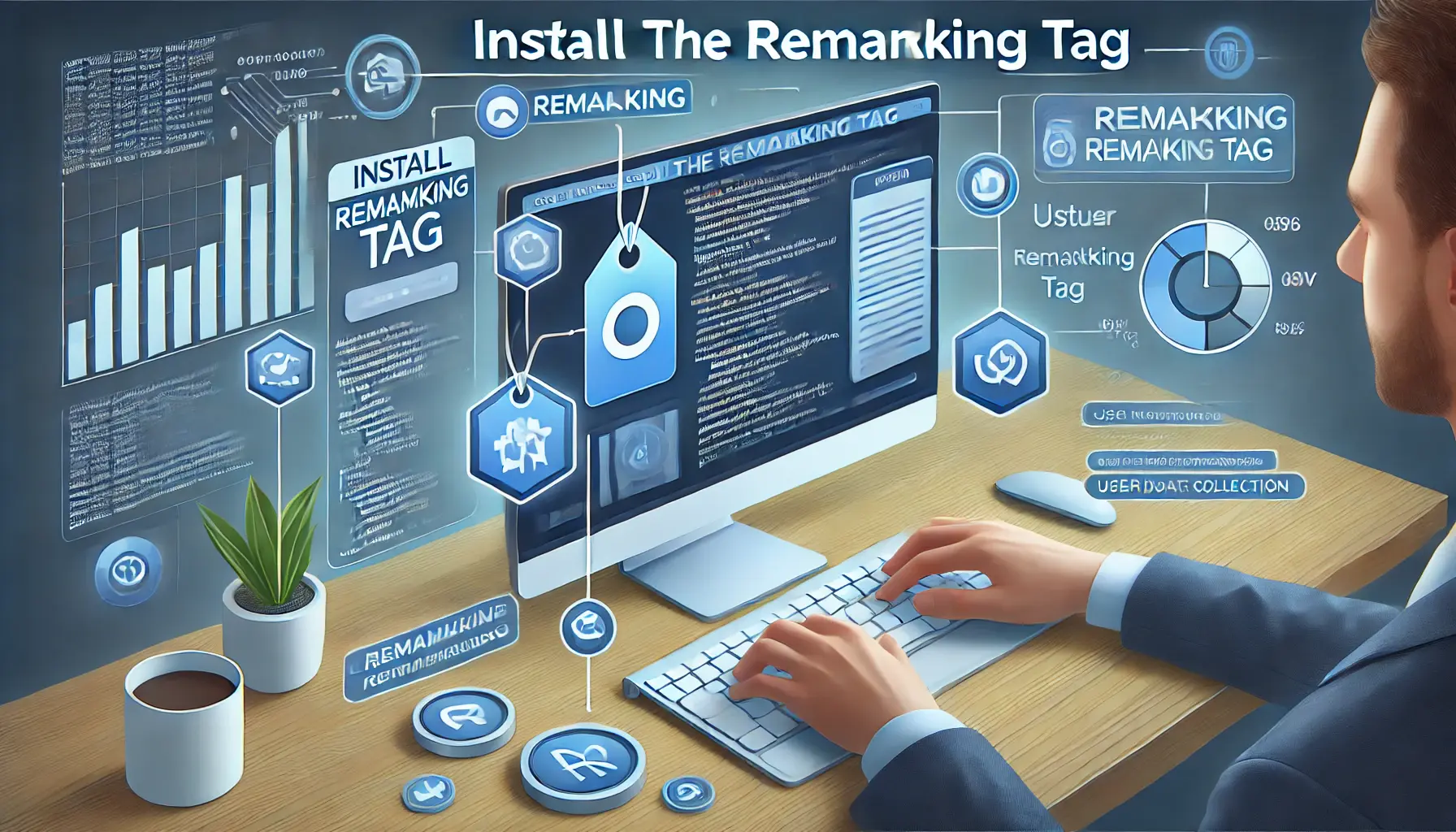
Illustration of the process of installing a remarketing tag on a website.
2. Install the Remarketing Tag
To track user interactions, you need to install a remarketing tag on your website.
This is a small piece of code that collects data about visitors.
Here’s how to do it:
- From your Google Ads account, open the ‘Audience Sources’ tab.
- Hit the ‘Set up source’ button and follow the system prompts to automatically create the remarketing tag for you.
- Place the tag on all web pages, at the bottom before the closing tag.
This tag will track user behavior online, populating your remarketing lists automatically.
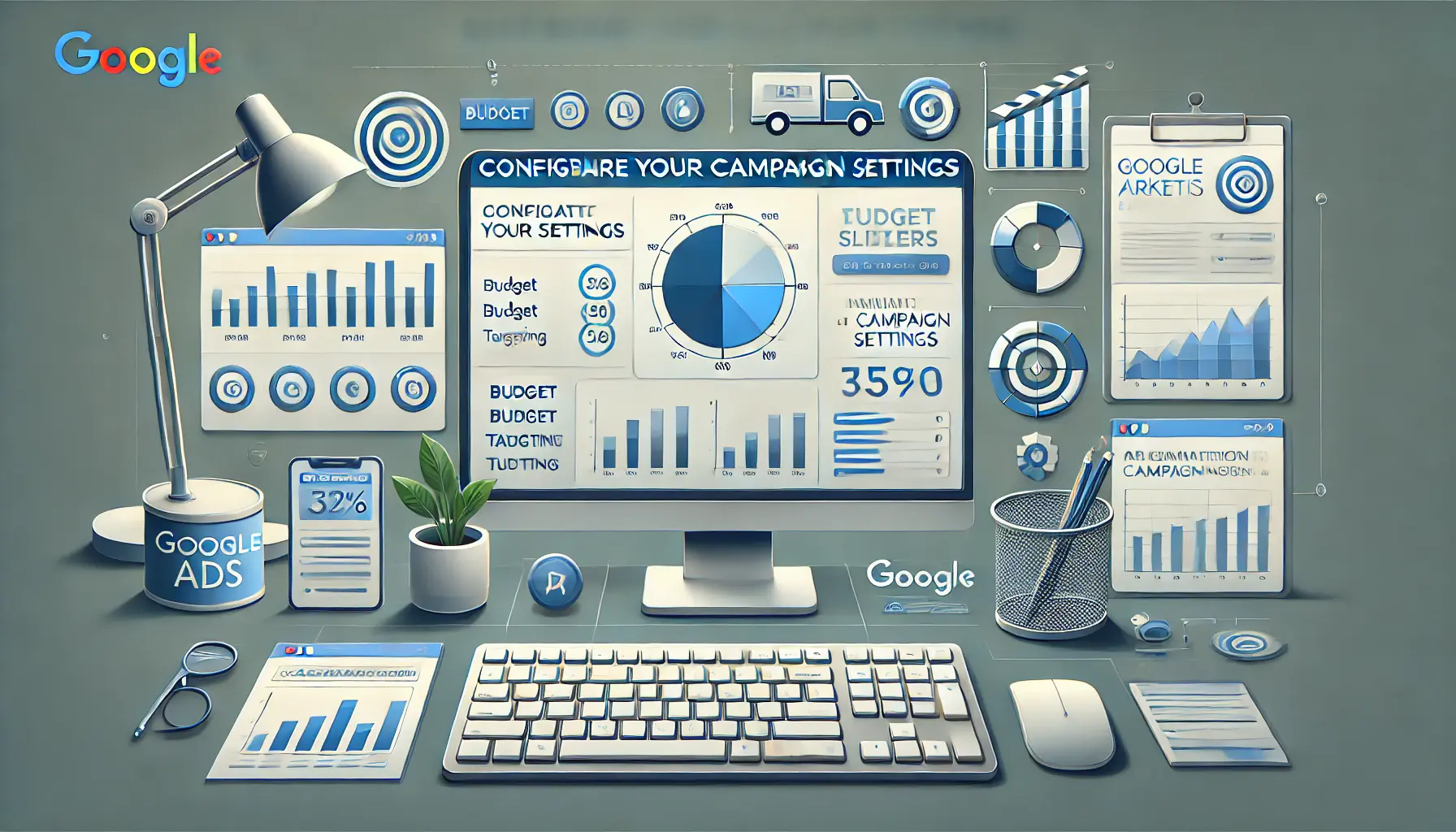
Illustration of configuring campaign settings in Google Ads.
3. Configure Your Campaign Settings
Once your lists are set up and the remarketing tag is in place, it’s time to configure your campaign settings:
- Pick the Right Campaign Type: You can go for display, search, or video ad campaigns depending on your strategy.
- Set Your Budget: Determine how much you’re willing to spend daily or monthly on your remarketing campaign.
- Define Your Targeting: Use your remarketing lists to target specific audiences and set bids accordingly.
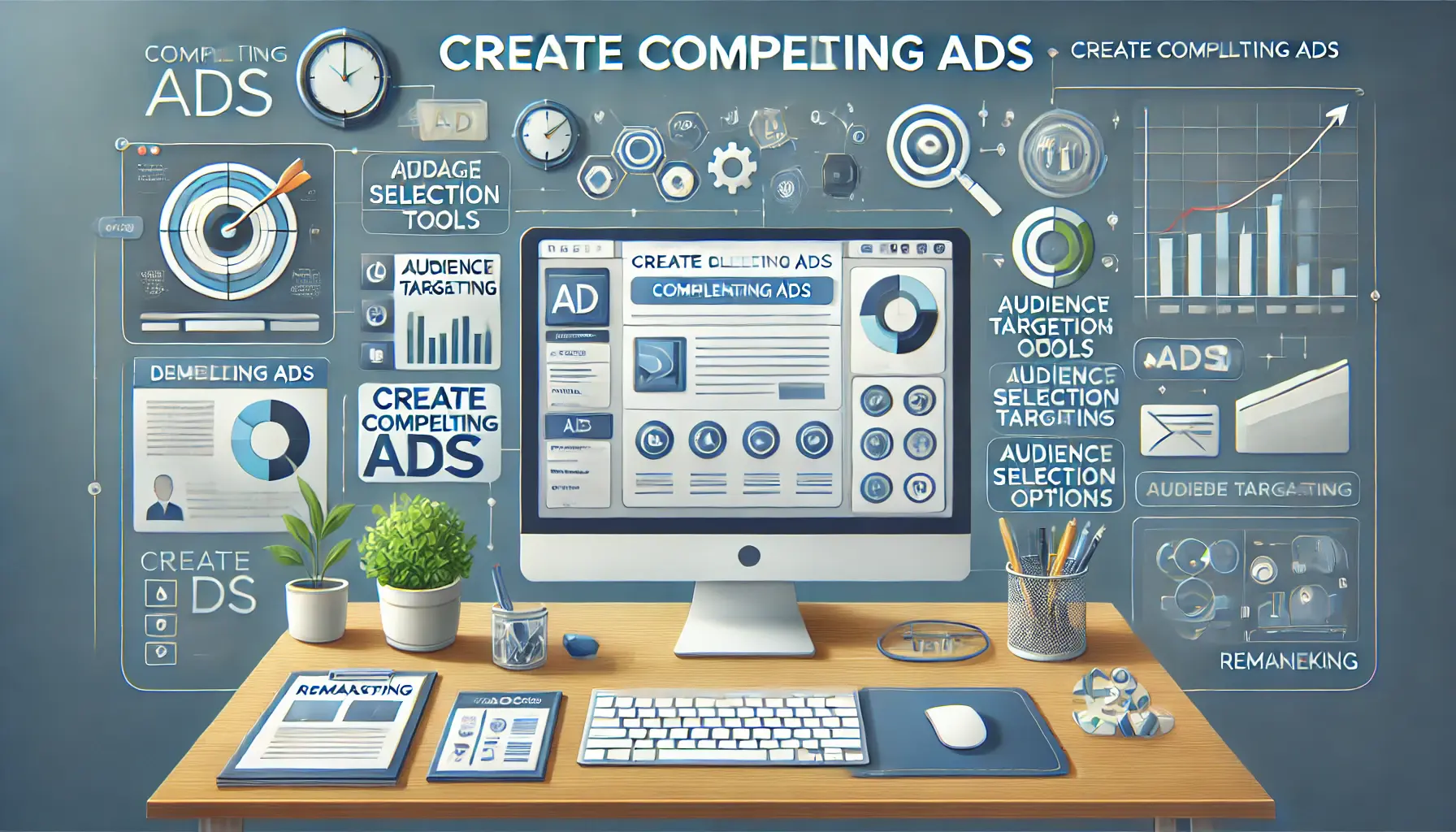
Illustration of creating compelling ads for a remarketing campaign.
4. Create Compelling Ads
Your ads should be engaging and tailored to the specific audience segments you’re targeting.
Here are some tips to consider in the building of great remarketing ads:
- Use dynamic ads: Highlight products viewed on your site to remind users of their interest.
- Include strong calls to action: Encourage users to return and complete their purchase.
- Test a series of ad formats: Try static images, video, and responsive ads to determine which format works best.

Illustration of monitoring and optimizing campaigns in digital marketing.
5. Monitor and Optimize Your Campaigns
What happens after running your remarketing campaigns?
Well, it is crucial that you monitor how those campaigns are performing regularly.
You can use Google Ads reporting tools to analyze key metrics such as CTRClick-Through Rate, the percentage of users who click on an ad after seeing it., conversion rate, and ROASReturn on Ad Spend, measuring revenue earned for each dollar spent on ads..
Based on this data, you can:
- Adjust your bids: Increase the bidding for performing segments while lowering the bids for those that are underperforming.
- Adjust your audiences: Add audience segments that are most engaging and remove those that did not convert well.
- Continuously A/B test: Test your ad copies and designs to optimize ad performance.
By following these steps, you can set up and optimize your remarketing campaigns on Google Ads to effectively re-engage users, increase brand recall, and drive conversions.
To maximize campaign effectiveness, ensure remarketing tags are correctly installed and audience lists are well-segmented.

Illustration of best practices for successful remarketing campaigns.
Best Practices for Remarketing Success
To really tap into the power of remarketing strategies in Google Ads, best practices need to be implemented to ensure that your campaign is truly effective.
You will engage more audiences, lift brand recall, and, in the process, drive conversions.

Illustration of segmenting audiences for targeted remarketing.
1. Segment Your Audiences
One great way to improve your remarketing efforts is to segment your audience based on their behavior.
This lets you tailor your messaging and ad creatives to each unique group:
- Cart Abandoners: Serve users who put items in their carts but didn’t convert with reminders or special discounts.
- Past Purchasers: Build campaigns for users who have made a purchase from you earlier to facilitate repeat purchases or upsell relevant products.
- Content Viewers: Speak to users who have viewed certain content on your site, inviting them to explore more similar offerings.

Illustration of creating compelling ad creatives for remarketing.
2. Use Compelling Ad Creatives
Your ads need to be noticed to capture the attention of prospective customers.
Here are a few tips for making remarketing ads effective:
- High-Quality Images: Use striking visuals that represent your products or services.
- Pertinent Messaging: The ad copy should be short and directly relevant to the needs of the users.
- Compelling Calls-to-Action: A call-to-action prompts users to take action, like “Shop Now,” “Learn More,” or “Claim Your Discount.”

Illustration of frequency capping in digital remarketing campaigns.
3. Frequency Capping
As much as it is important to remind users of your existence, it doesn’t mean they need to be bombarded with advertisements, which only creates ad fatigue and negative associations.
Employ frequency cappingA setting that limits the number of times a user sees an ad. by setting limits on how many times a user can view your ads.
This helps keep the brand positive while keeping your product top of mind.

Illustration of testing various creative formats for remarketing.
4. Test Various Creative Formats
Test different ad formats to determine what works best for your audience, including the following:
- Static Ads: Simple, image-based ads.
- Animated Ads: More interesting animations usually catch users and drive more interactions.
- Video Ads: Use compelling video content to tell your brand story or showcase how products work.
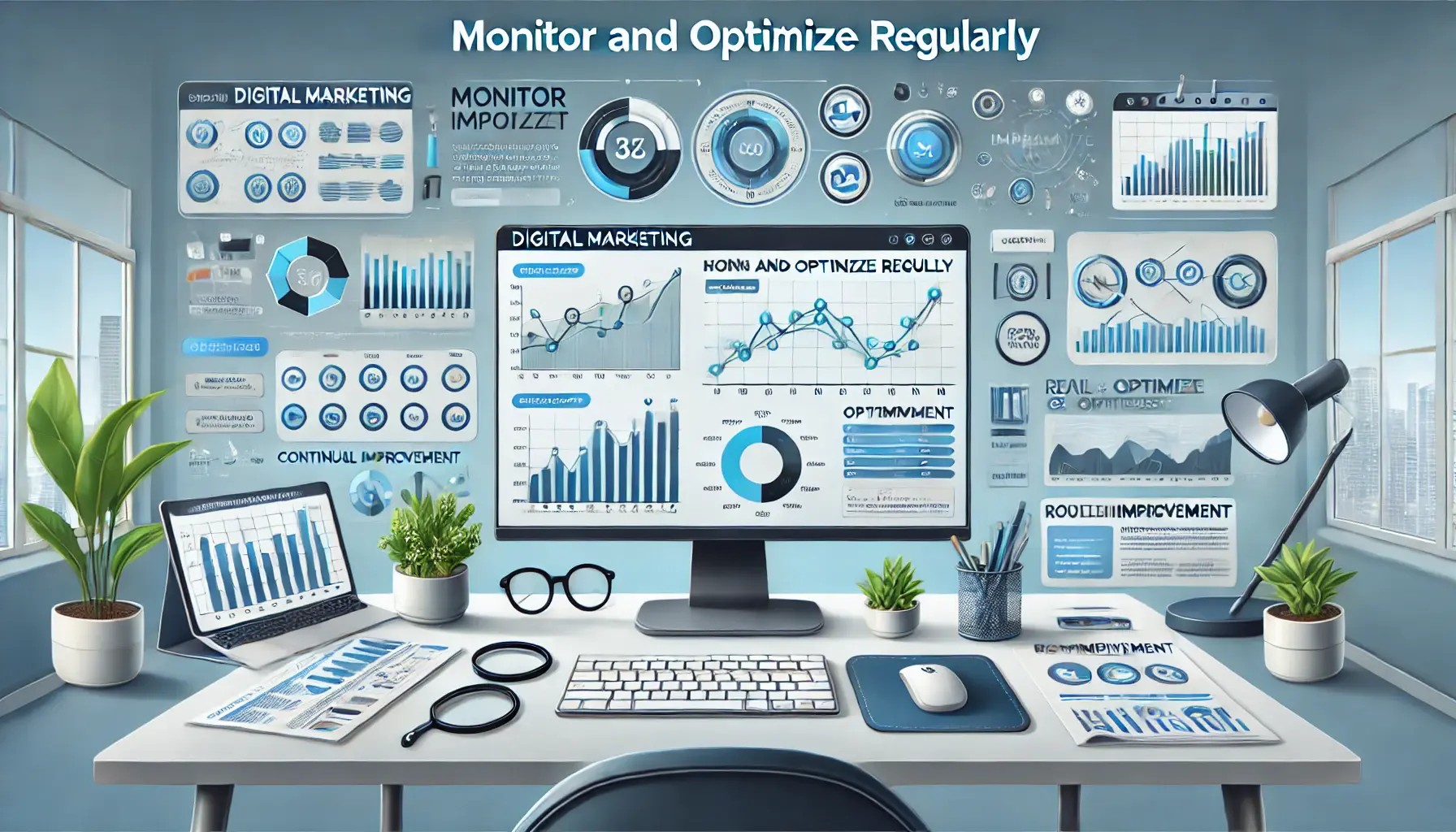
Illustration of continuous monitoring and optimization in remarketing campaigns.
5. Monitor and Optimize Regularly
Continuous monitoring and optimization of your remarketing campaigns are crucial.
Analyze performance metrics to determine areas for improvement:
- Conversion Rates: Determine which ads have the highest conversion rates and look for ways to replicate that success.
- A/B Testing: Test different elements in your campaigns on a continuous basis—ad copy, visuals, targeting options, anything that can be tested—to see what works best.
- Adjusting Bids: Be prepared to adjust your bids based on performance. Increase the bids for well-performing segments and decrease them for those not meeting your expectations.
By applying these best practices, you will be able to implement better remarketing strategies on Google Ads that drive superior results in achieving your marketing objectives.
Now that you understand how to succeed with remarketing, let’s take a closer look at how to measure the performance of your campaigns effectively.
Frequency capping is essential to avoid ad fatigue, ensuring your remarketing ads remain effective and welcomed.

Illustration of analyzing remarketing campaign performance in digital marketing.
Analyzing Remarketing Campaign Performance
Once you have put your remarketing strategies in place on Google Ads, the critical activity that follows is to analyze your campaign performance.
By understanding how your remarketing efforts are turning out, you can make informed decisions that will help improve your approach for overall effective results.

Illustration of tracking key metrics for remarketing campaigns.
1. Key Metrics to Track
When it comes to assessing the performance of your remarketing efforts, there are a few key metrics that you will want to pay close attention to:
- Click-Through Rate (CTR): This refers to the percentage of users that click on your ads after being served. A higher CTR means that your ads are relevant and enticing.
- Conversion Rate: This indicates the number of users who, after clicking on your ad, perform the desired action, such as making a purchase or signing up for your newsletter. By monitoring this metric, you will be able to understand how effective your remarketing is.
- Return on Ad Spend (ROAS): The larger the ROAS, the better your profitability will be.
- Cost Per Acquisition (CPA): This metric tells you how much you are paying to get a new customer via your remarketing campaigns. The secret to maximizing profitability lies in lowering your CPA while keeping or growing conversions.

Illustration of using Google Analytics to gain insights for remarketing campaigns.
2. Using Google Analytics for Insights
You can set up goals and track user behavior on your site for:
- Set Up Goals: First, you will need to define what success looks like by setting up goals within Google Analytics. This could be something like a purchase or a sign-up.
- Behavior Flow: Use the behavior flow report to see how users navigate through your website after clicking on your remarketing ads.
- Audience Segmentation: Analyze different audience segments to find which groups are converting and which may require further targeting or engagement strategies.
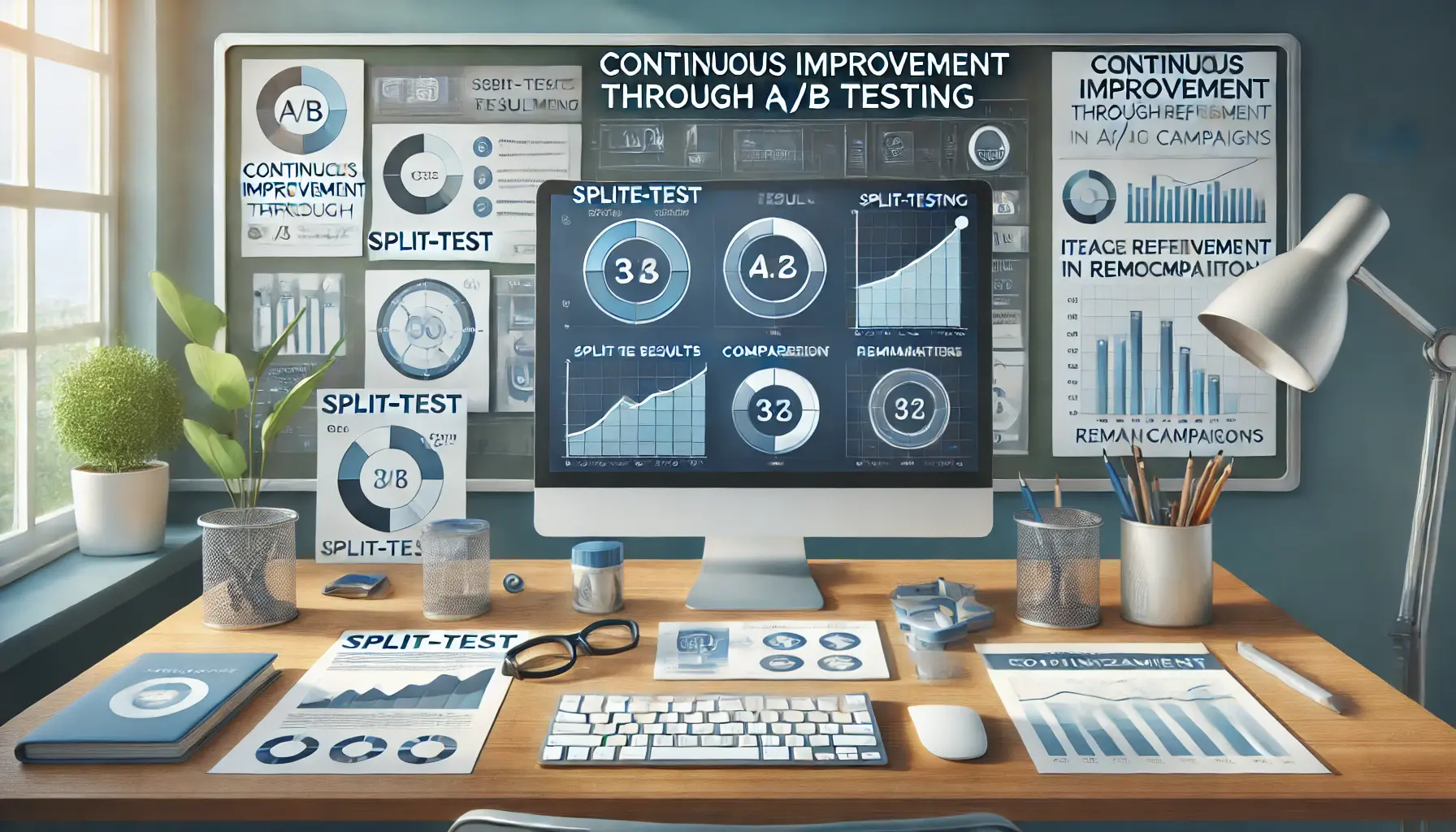
Illustration of continuous improvement through A/B testing in remarketing campaigns.
3. Continuous Improvement through A/B Testing
A/B testing is a powerful means of fine-tuning your remarketing campaigns.
By testing various elements, you can observe which aspects work best with your audience:
- Ad Copy: A/B test ad copy variations to identify those that result in higher engagement and conversion rates.
- Creative Formats: Test different ad formats, such as images, videos, or carousel ads, to find the most effective for your brand.
- Targeting Options: Test different audience segments and bidding strategies to uncover the optimal combinations.

Illustration of realigning remarketing strategies based on performance insights.
4. Realigning Your Strategies
Based on the insights you collect from your analysis, be prepared to adjust your strategies.
This may include the following:
- Refining the Target: Focus on high-performing segments and exclude those that are underperforming.
- Optimize Ad Spend: Increase your budget for campaigns and audience segments that drive higher ROAS and more conversions.
- Enhancing Creative Elements: Redesign ad creatives based on performance data; stick to those elements that engage users effectively.
A systematic performance analysis of your remarketing campaigns allows you to refine continuously and get the most out of Google Ads.
By following these best practices, you can make your remarketing efforts effective and aligned with your overall marketing objectives.
Track CTR, conversion rate, and ROAS to measure and optimize remarketing campaign performance.

Illustration of mastering remarketing strategies in Google Ads.
Conclusion: Mastering Remarketing Strategies in Google Ads
The process of mastering remarketing strategies in Google Ads is essential for businesses that wish to re-engage customers.
Understanding the ins and outs involved is the first step toward success.
By applying the proper techniques, you’ll be able to keep your brand top-of-mind, driving more conversions and overall better performance.

Illustration of key takeaways from a successful remarketing strategy.
Key Takeaways
Throughout this article, we covered several critical aspects of implementing successful remarketing strategies:
- Understanding Remarketing: Recognizing the importance of reconnecting with users who previously engaged with your brand forms the bedrock for effective remarketing.
- Types of Remarketing Strategies: Utilizing standard, dynamic, and search ad remarketing will enable you to run more effective campaigns that better meet the needs of particular audiences.
- Setting Up Remarketing Campaigns: Creating your remarketing lists, installing your tags, and configuring your settings all play significant roles in helping you get up and running with your campaigns.
- Best Practices for Success: Segmenting your audience, using compelling creatives, and monitoring performance are crucial for ensuring that your remarketing efforts stay fresh and relevant.
- Analyzing Performance: Ongoing assessment of key metrics such as CTR, conversion rates, and ROAS is vital for optimizing your remarketing strategies.
By integrating these elements into your Google Ads remarketing efforts, you can greatly improve your ability to reach and convert interested users.
Whether you are targeting cart abandoners, past purchasers, or content viewers, a personalized approach to all three will strengthen your campaigns.
Moving forward in today’s constantly changing digital marketing world, adopting a strategic and data-driven approach to remarketing will be advantageous and necessary.
Long-term success and campaign conversions depend on staying informed and adapting your strategies based on performance insights.
Effective remarketing keeps your brand top-of-mind, fostering conversions and supporting long-term business success.

Illustration of FAQs on remarketing strategies in digital marketing.
Your campaigns can be managed by an agency specialized in Google Ads, check out our service page.
FAQs on Remarketing Strategies
The following are some frequently asked questions about remarketing strategies in Google Ads to help clarify your understanding and further improve your advertising efforts.
Remarketing in Google Ads is a strategy where advertisers show ads across the web to users who previously visited their website or mobile app, helping to reconnect with potential customers.
Dynamic remarketing personalizes ads for users based on their past interactions with your site, such as specific products or categories viewed, to increase the possibility of conversions.
Remarketing can help increase brand awareness, conversion rates, and value for money spent since it targets only those individuals who have shown interest in the offered products or services.
You can create your remarketing lists in Google Ads by going to the Audience Manager and then clicking ‘Remarketing Lists.’ From there, you can set the criteria for users to include.
Key metrics to track include click-through rates (CTR), conversion rates, return on ad spend (ROAS), and cost per acquisition (CPACost Per Acquisition, the amount paid to acquire a new customer through advertising.) to assess the effectiveness of your remarketing efforts.
Yes, email marketing remarketing can be done by targeting users who have engaged with your previous emails, encouraging them to return to your website or complete a purchase.
You can use various ad types for remarketing, including static image ads, animated ads, responsive ads, and video ads to engage users across different platforms.
You should regularly evaluate and adjust your remarketing campaigns based on performance data, ideally every few weeks, to optimize targeting and ad creatives for better results.
While often used interchangeably, remarketing typically refers to on-screen ads directed at former website visitors, whereas retargeting generally involves targeting ads based on cross-platform online behavior.











